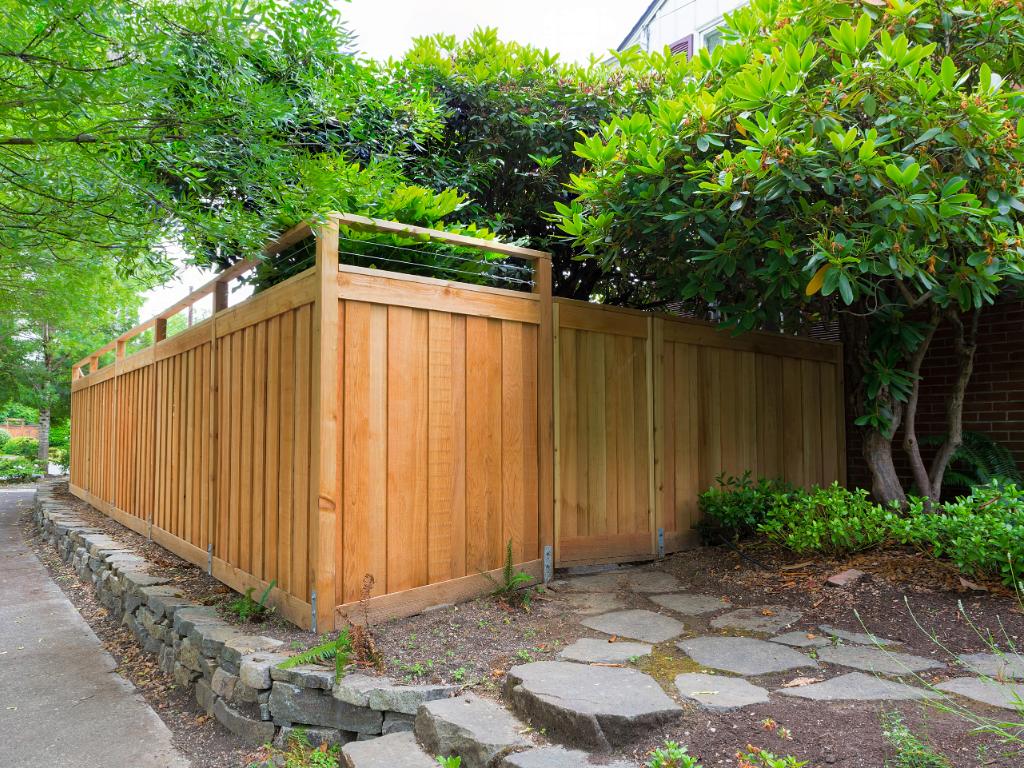The Perfect Pairing: Wooden Gates and Artificial Grass in Your Garden Design
Elevating your garden’s aesthetic appeal doesn’t always have to mean a complete renovation or expensive additions. Sometimes, the simplest changes can synergize to create a stunning visual impact. In this guide, we’ll explore the harmonious pairing of wooden gates with artificial grass and why they might be the design elements your garden is missing.
The Unassuming Charm of Wooden Gates
Wooden gates have a timeless appeal from their natural warmth and the organic ambiance they lend to any space. In garden design, wooden gates are powerful focal points, blending the artificial with the natural. There’s an undeniable sense of charm and nostalgia that these gates evoke, reminding us of grand entrances and the quintessential English countryside.
Regarding practicality, wooden gates offer durability, privacy, and security, making them an integral part of any garden layout. They stand the test of time, aging gracefully as their wood takes on a weathered patina, further adding character to your garden. Not only are they visually striking, but they also offer the promise of solitude within your green haven.


Faux Fields and Verdant Dreamlands: Artificial Grass
The evolution of artificial grass has been nothing short of a revolution in garden design. No longer the scratchy, neon-green rug of yesteryears, modern artificial grass installation beautifully emulates the feel and look of natural grass, often to the point of optical trickery. The benefits of artificial grass are myriad, from low maintenance and cost efficiency to a constantly pristine appearance.
The lush, inviting greenery of artificial grass creates a foundation for your garden that’s as practical as pleasant. It’s soft underfoot, free from the vagaries of weather and pests, and above all, it maintains a perpetual freshness that speaks to its timeless appeal. It’s a patch of perpetual spring that beckons you to walk barefoot and revel in the luxury of the outdoors.
A Match Made in Design Heaven
The combination of wooden gates and artificial grass takes garden design to another level. Picture the rustic elegance of a solid oak gate against the backdrop of evergreen artificial grass, and you have an idyllic and inspiring scene. Here, we examine how this duo enhances your garden oasis, working to create an environment that delights the senses.
Visual Cohesion and Serenity
Gardens are places of respite constructed to offer peace and tranquility. Wooden gates and artificial grass provide a serene, unified canvas that showcases the natural beauty of your garden. While the artificial grass provides a consistent, calming green hue, the wooden gate introduces a textural contrast that’s visually stimulating without being jarring.


Structure and Form
The formality of a well-crafted wooden gate can help anchor your garden’s design, particularly in larger spaces. When set against a bed of artificial grass, the gate divides the garden into distinct areas, each with its purpose or theme. This could mean delineating pathways, separating play areas, or directing the eye toward a central point of interest, such as a fountain or a floral display.
Authenticity and Earthiness
The natural appeal of wood, an elemental material, accents the earthiness of artificial grass, forming a partnership that feels authentic and unforced. Whether you choose a set of gates with intricate carvings or a more austere design, the interplay of wood and grass lends a grounded quality to your garden, making it feel connected to the natural world.
Maintenance and Longevity
Both wooden gates and artificial grass are notable for their low maintenance requirements and longevity. Wooden gates, when properly treated, can last for decades, while artificial grass continues to look luscious without the need for watering or mowing. This combination, therefore, promises garden beauty without the continual upkeep that natural materials may demand.
Privacy and Security
Apart from their aesthetic roles, wooden gates serve practical purposes regarding security and privacy. Framing your garden’s entryway creates a visual barrier that demarcates public and private spaces. When closed, they offer a sense of enclosure that can be particularly comforting, especially in urban settings. Artificial grass, however, ensures that your privacy is maintained without the need for overgrown, untidy natural grass that can attract wildlife.
Implementing the Duo in Your Garden
Now that you know the dynamic duo’s merits, how do you implement wooden gates and artificial grass in your garden design? Here are some considerations to keep in mind:
Selecting the Right Gate
The choice of the gate is crucial, as it will be the main interface between the outside world and your garden sanctuary. Consider the architectural style of your home and garden, and choose a gate that complements these elements. Additionally, practical concerns such as gate size, security features, and ease of use should be considered. Whether you opt for a simple picket style, a grand driveway gate, or a charming arbor, ensure that it resonates with the overall design philosophy of your garden.
Planning the Artificial Grass Layout
The planning and installing artificial grass require careful consideration of the terrain, usage patterns, and drainage. The key is to make it appear as natural as possible, so take the time to prepare the ground, including leveling and compacting the soil. Decide on any elevation changes or landscaping features, as these will influence the cut and seam placements of the artificial grass.
The Unifying Role of Paths and Arbors
Paths and arbors can act as the threads that tie your wooden gates and artificial grass together. They create a series of transitional spaces that allow different garden elements to flow seamlessly. Consider using natural materials, such as gravel or stepping stones, for paths that wind through the grass and lead to your gateways, whether formal or whimsical in design.
Seasonal Accents and Maintenance
To keep the beauty of your garden year-round, consider seasonal accents like potted plants or hanging baskets that can be strategically placed near the gates. These provide pops of color and texture that can be easily changed with the seasons. Regular maintenance, such as checking for loose hinges on the gates or brushing the artificial grass to keep it pristine, is important to ensure the longevity of your garden’s new features.
Conclusion: The Allure of Elegance and Ease
Combining wooden gates and artificial grass is a harmonious marriage of elegance and ease. It presents a vision of the garden that is both traditional and cutting-edge, bridging the gap between the natural and the crafted. By bringing these two elements together, you’re creating a beautiful space and curating an experience that invites you to linger a little longer and immerse yourself in the serenity of your green getaway.
In garden design, wooden gates and artificial grass open the door to countless possibilities, each unique expression of personal style and vision. So, take the first step toward this enduring union and envision your garden with refined rusticity and perpetual verdancy. Because when wooden gates meet artificial grass, what grows is more than just a garden—it’s a visual narrative that speaks volumes about your home and heart.

